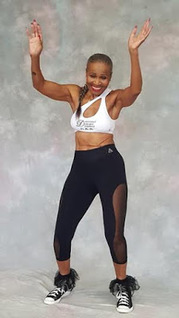 Today is my fortieth birthday, and my thoughts have been very much preoccupied with this milestone. I am pretty positive about it - it's a privilege denied to too many. It was also a great excuse for a party! However, I'm aware that in fitness circles, this puts me in the category of 'older adult', and according to 70 percent of Brits, I'm apparently no longer fit to wear a bikini. Fortunately, I belong to the remaining 30 percent, so won't let that stop me! But what does being an older adult mean in terms of exercise? Not all that much, actually, if you're fit and well. There are no contraindications to exercise at any age - it's medical conditions and injuries that define what you should and shouldn't do, and if anything, exercise becomes increasingly important as we age. However, as I enter my prime I am aware that there are certain things I (and all of us) can be doing to help stave off conditions associated with ageing. The biggest skeletal changes which start to become noticeable after forty are loss of muscle mass and bone density:  Muscle mass declines by 3-5% per decade after 30 years of age in physically inactive people. This can lead to weakness, loss of stamina, and difficulties with weight management. The good news is that weight bearing exercise can help to maintain and even increase muscle mass at any age. A sufficient intake of protein - in conjunction with strength training - is needed to sustain muscle mass. However, don't go overboard, as you use calcium to help digest protein, so too much may increase osteoporosis risk (see below). From your mid-thirties onwards, bone density drop can drop by about one-percent per year, potentially leading to osteopenia or osteoporosis. In the early years following the menopause there can be a rapid decline of 20 percent, with an associated risk of bone fractures. Strength training and impact exercises will help to minimise the loss of bone density, as will ensuring an adequate supply of calcium and vitamin-D. Daily short bursts of sunshine in the summer - not enough to burn - will provide all the vitamin D you need in the spring and summer. Public Health England also recommends taking a daily 10 microgram vitamin-D supplement in the autumn and winter. Calcium can come not just from milk - other great sources include leafy greens and baked beans. Also, there is emerging evidence that Vitamin K is necessary for bone health - present in meat, eggs, dairy and natto (fermented soy). With a good lifestyle, age shouldn't hold you back at all. Some of my oldest clients are also some of my most capable. I'm reaching half the age of body builder Ernestine Shepherd (pictured - unfortunately not one my clients), so I reckon I'm just getting started. Comments are closed.
|
AuthorFitness and Pilates instructor with a passion for science. Archives
November 2021
Categories |
 RSS Feed
RSS Feed
